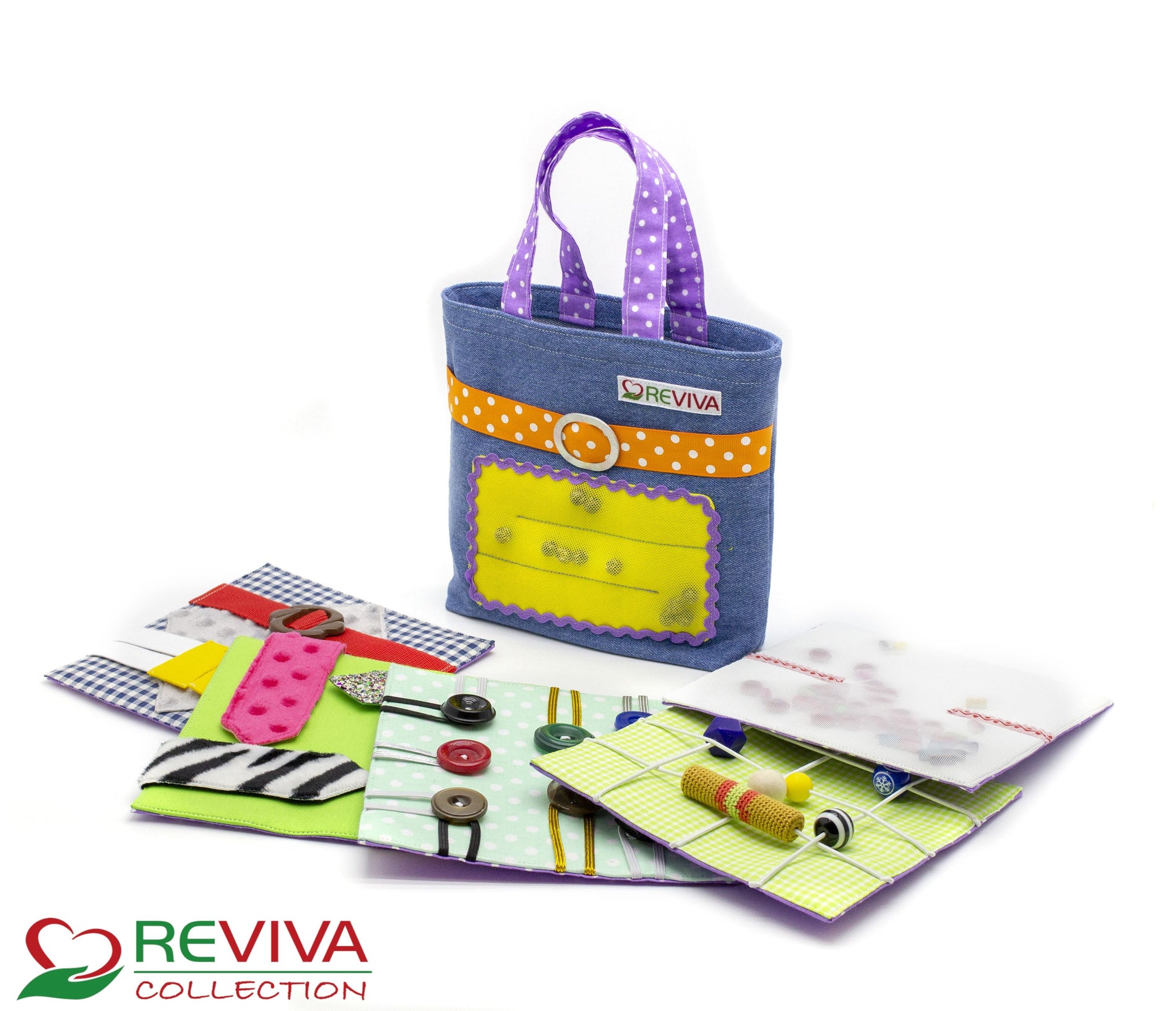Nest blanket and nest muff instead of wrinkled shirt and open trousers
One of the typical symptoms of dementia is pronounced motor restlessness: constantly tugging at clothing, messing up hair, or tearing open buttons and zippers. This behavior is called nesting. A nesting blanket can help with this and at the same time sharpen the sense of touch and practice everyday skills. A nesting blanket is a patchwork quilt made from various stimulating materials such as corduroy, leather, or wool. Various appliqués such as buttons, pieces of fabric, or crocheted figures can be attached to it. A selection of nesting products can be found here . People with dementia can go on a long “journey of discovery” with the brand new, large, and unique nesting box from REVIVA , which contains 14 nesting cards with a variety of nesting elements and activities to calm restless hands.
Many Alzheimer's and dementia patients find the colorful blankets extremely interesting and can engage with them for extended periods. This can almost have a meditative effect. It's often observed that patients are noticeably calmer and more balanced after engaging with the blanket. Individual elements of the blanket can also be used to practice everyday skills, such as how to open and close a button or how to get a tissue out of a pocket. If the nesting blanket is too big for you, you can also try a nesting muff . This is a small, tube-shaped blanket with many nesting elements, the ends of which can be used to hold your hands.

